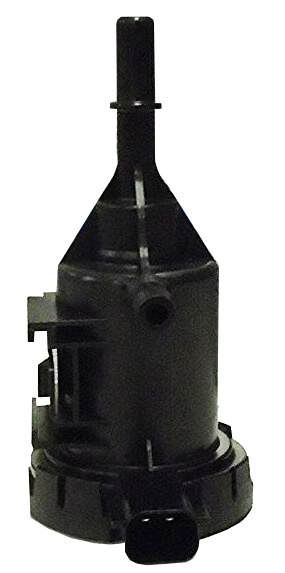No start after filling with gas
No start after filling with gas — Bad Purge Valve is The Most Common Cause
A stuck open purge valve can cause a no start after filling with gas. The fuel vapors during fill up are supposed to get captured by the charcoal canister. If the purge valve is stuck open, they’ll go right into the engine, causing it to flood and not start. Here’s how the evaporative emissions system works.
The evaporative emissions system in your car is designed to adsorb fuel vapors as you fill your tank. This prevent fuel vapors from venting to the atmosphere and causing smog pollution.
How the evaporative emissions system works
As you the tank fills, the new fuel volume exerts pressure on the vapors above the fuel. The vapors can try to escape through the filler neck or be pushed into a canister filled with activated charcoal. As long as the evaporative emissions system is working properly, the charcoal canister offers the path of least resistance and the fuel vapor is adsorbed by the charcoal. The canister is designed to adsorb all of the fuel vapor from the tank. After filling, the canister must be purged so it can be used again on the next fill-up.
How the charcoal canister gets purged
On the first engine start after the fill-up, the engine computer initiates a purge operation. The computer knows you’ve filled the tank because it monitors the fuel gauge.
The purge cycle:
• The computer provides ground to the purge valve solenoid.
The purge valve opens, allowing engine vacuum to suck vapor from the charcoal canister.
• The computer provides ground to the vent solenoid, allowing fresh outside air into the canister.
• Fuel vapors get sucked out of the canister, fresh air replaces it and the canister is ready for the next fill-up.
• The computer monitors engine operation during this period. It knows that the fuel vapors are fueling the engine, so it cuts down on fuel injector “on” time. As soon as the fuel vapors are used up, the computer senses the drop in idle speed and lengthens fuel injector on time.
• The computer removes ground from the vent valve and it closes while the purge valve remains open. Thus, the entire fuel system is under vacuum. In some vehicles, a fuel tank pressure sensor monitors the vacuum level. Once the system is under maximum engine vacuum, the computer deletes ground to the purge valve and it closes. The fuel tank pressure system monitors the vacuum in the system. If the vacuum level drops, the computer sets a code for an emission system leak.
Here’s what goes wrong with the evap system that causes a no start after filling with gas
• The purge valve sticks open while you’re filling with gas causing a no start
Instead of filling the charcoal canister with fuel vapor, the filling process pushes fuel vapor directly into the engine, flooding the engine and causing it not to start.
The purge valve can stick open for several reasons:
a) The charcoal canister has failed and charcoal particles prevent the purge valve from closing
b) The purge solenoid wiring has an internal short to ground
How to start your car if it fails to start after filling it with gas
Since a failure in the evap system usually causes your engine to flood, do this:
Depress the gas pedal all the way to the floor and hold it there while you crank the engine. Depressing the pedal causes the computer to turn off the fuel injectors so no more fuel enters the engine. This allows fresh air to enter the cylinders and dry out the flooded fuel vapors.
After a few second of cranking like this, release the gas pedal and start normally.
©, 2022 Rick Muscoplat
Posted on by Rick Muscoplat

